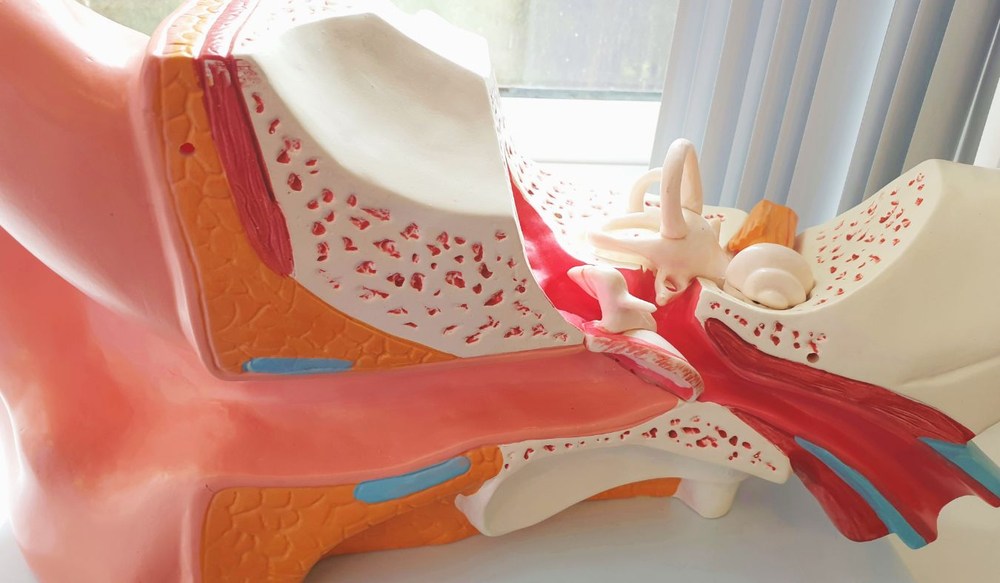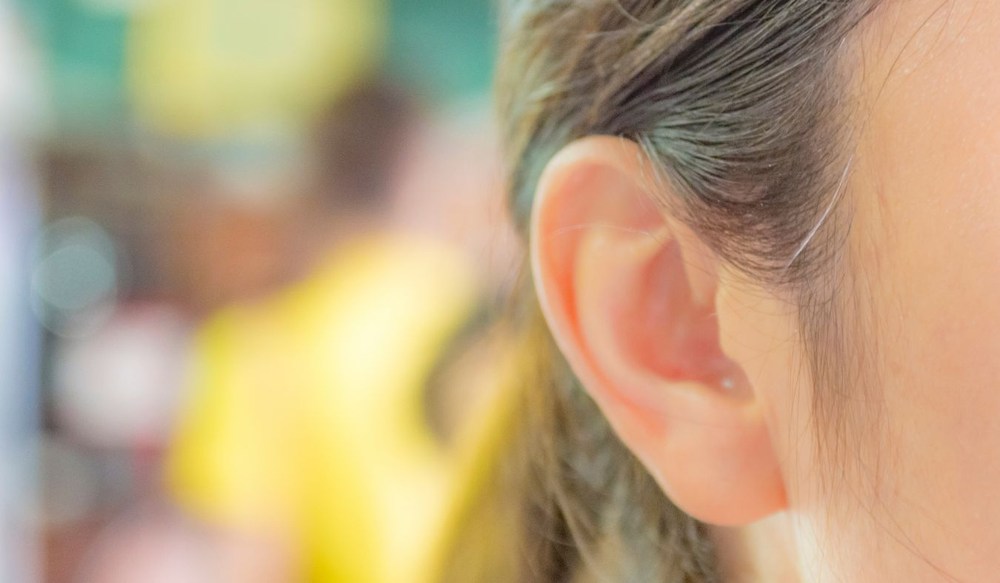Taking Your Hearing Aids on Vacation
Traveling should be exciting and enjoyable, but if you have hearing loss,

By: admin | July 29, 2025
Being outdoors with hearing aids feels different than wearing them inside. Wind noise can be overwhelming, sounds seem to come from all directions and you might worry about sweat or weather affecting your devices. Many people with hearing aids love spending time outside but feel uncertain about how well their hearing aids will work when they’re running, gardening or just sitting on the porch. The good news is that outdoor activities don’t have to mean struggling to hear or leaving your hearing aids at home.
Modern hearing aids are designed to handle the challenges that come with outdoor environments. They can reduce wind noise that would otherwise make everything sound like you’re in a tunnel, and they’re built to withstand humidity and temperature changes better than older models. Understanding how your hearing aids work outside versus inside helps you feel more confident about staying active and enjoying the outdoor activities that matter to you, whether that’s camping with family or just having a conversation in your backyard.
Hearing loss can have a real impact on your daily activities, often in ways that catch you off guard. Simple things like chatting with friends on a walk, listening for approaching cyclists on a trail or hearing the laughter of kids playing outside can become challenging. Outdoors, wind noise or distant sounds can be harder to make out, making you feel less confident when you are active or exploring new places. Even relaxing activities like gardening or enjoying a picnic might feel more isolating if you cannot easily follow conversation or respond to someone calling your name.
Social events can also be affected when hearing loss makes it difficult to keep up with conversations in groups or noisy settings. At a family barbecue or dinner out with friends, you might struggle to follow jokes or stories, leaving you feeling left out. Activities that involve coordination or teamwork, like playing sports or volunteering, may become frustrating if you miss instructions or cannot hear warnings. These small barriers can add up, making you less likely to participate in the things you enjoy. Recognizing these changes is an important step toward finding solutions that help you stay connected and active in the ways that matter most to you.
Spending time outdoors does more than offer a change of scenery. Fresh air, sunshine and physical activity can lift your mood, reduce stress and support your overall health. Whether you are going for a walk in the park, gardening in your yard or enjoying a picnic with friends, being outside encourages you to move more and take a break from daily routines. Even gentle activities like birdwatching or sitting on a porch can give your mind a rest and help you feel more balanced.
Outdoor activities also strengthen social connections and build a sense of community. Meeting neighbors on a stroll, joining outdoor fitness classes or gathering with family for a barbecue keeps you engaged with others and prevents feelings of isolation. Staying active outside supports both physical and emotional wellness, making it easier to maintain a healthy lifestyle as you age. Making time for outdoor activities can be a simple but meaningful way to care for your whole self.
Weather can have a real impact on how well your hearing aids work when you are outside. Wind is one of the biggest challenges, often creating whistling, static or loud rushing sounds that make conversations difficult to follow. This can be frustrating during outdoor activities like walking, hiking or attending sports events where wind is common. Modern hearing aids often have special settings or microphones designed to reduce wind noise, but learning how to use them effectively can make a big difference in comfort and clarity.
Rain and humidity are other concerns for hearing aid wearers. Moisture can seep into microphones, battery compartments or internal electronics, which can lead to muffled sound, malfunctions or even permanent damage. Sweating during exercise or on hot days can have similar effects, making it important to dry your hearing aids properly and store them safely when not in use. Many newer hearing aids come with water-resistant features, but even these need regular care and maintenance to keep them working well.
Temperature changes can also affect your devices in subtle ways. Going from a hot, humid environment to a cool, air-conditioned space can create condensation inside the hearing aids, potentially damaging sensitive components over time. Cold weather can drain batteries faster, while dusty or sandy conditions might clog microphones or vents. Our team can help you choose hearing aids with the right protective features and share tips for managing these weather-related challenges, so you can continue to hear clearly no matter where your day takes you.
Outdoor spaces often have many competing noises, like wind, traffic and people talking at once. These sounds can make it difficult to focus on the voices or signals you want to hear. Some common challenges include:
Hearing aids are built to help you focus on speech and important noises, even when there is a lot happening around you. Many modern devices include features for outdoor use, like wind noise reduction, directional microphones that help you hear voices in front of you and automatic volume adjustments that adapt to your environment.
These tools make it easier to enjoy conversations and stay alert to warning signals while outside. With the right setup, you can focus more on enjoying your time outdoors and less on straining to hear.
Background noise outside is very different from what you hear indoors. Sounds like traffic, people talking, wind and birds all mix together in ways that can make it tough to pick out speech or important signals. Unlike indoor spaces where walls help control sound, outdoor areas allow noises to travel freely and overlap. This means your hearing aids may need to work harder to help you focus on the sounds you want to hear.
Directional microphones in hearing aids can make a big difference outdoors. These microphones focus on sounds coming from in front of you and reduce noise from the sides and behind.
This feature is especially useful in open spaces with many different sounds happening at once. Directional microphones help make conversations clearer and easier to follow, and can also help you feel more confident that you will not miss important sounds like someone calling your name or a warning signal.
Wind can cause a loud rushing or whistling sound in your hearing aids, making it harder to enjoy conversations or hear important sounds. Many hearing aids now include special features that reduce wind noise, like wind noise management programs and tiny vents that let air pass through more easily.
Some models use advanced digital processing to tell the difference between wind and speech, so you hear voices more clearly even on breezy days. Choosing devices with these features can help you feel more confident and comfortable outdoors.
Outdoor environments can change quickly, leading to sudden shifts in sound levels. You might move from a quiet garden path into a busy street or hear a loud noise like a siren or barking dog. These changes can be surprising and sometimes uncomfortable. To help manage these situations, consider the following:
Being able to hear safety sounds like car horns, bike bells, sirens or people calling out is important when you are outside. These alerts help keep you safe near busy roads, parks or crowded public spaces.
Hearing aids are designed to help you pick up on these safety sounds more easily. Some devices have special settings that focus on signals like alarms or horns so you do not miss them in noisy environments. Our team can adjust your hearing aids to make sure warning sounds stay clear and easy to notice.
Outdoor group activities often have more background noise than indoor spaces, making it harder to follow conversations. You may find yourself missing parts of what friends or family are saying, which can be frustrating.
Using hearing aids and positioning yourself closer to the main group can help you stay included. Planning ahead by choosing quieter outdoor spots and letting others know about your hearing needs also supports better communication. These steps help keep social bonds strong so you can continue enjoying time with others outside.
Taking care of your hearing aids while being active outside helps keep them working well. Simple habits protect your devices from sweat, dirt or sudden weather changes.
Wipe your hearing aids with a dry, soft cloth after outdoor activities to remove moisture and dust. Store them in a safe, dry place when not in use, especially if you have been near water or caught in the rain.
If you expect to sweat or spend time in wet conditions, consider using special covers or clips made for hearing aids. These accessories keep out moisture and prevent your devices from falling off during movement.
If you spend a lot of time outdoors, it helps to choose hearing aids that can keep up with your activities. Look for models with features like wind noise reduction, which can make a big difference when you are walking, hiking or biking. Durable designs that resist moisture and temperature changes are also important if you enjoy gardening, fishing or spending time in different weather conditions. Thinking about where you’ll use your hearing aids most often can help you pick a style and features that feel natural and reliable outside.
You might also want hearing aids with multiple listening programs or automatic settings that adjust when you move from quiet spaces to busier outdoor areas. Features like directional microphones can help you focus on conversations even in noisy parks or crowded events. Talk with your audiologist about how you spend your time outdoors so they can recommend options that support your lifestyle. The right hearing aids should make it easier to enjoy the activities you love without making you worry about what you might miss.
Spending time outside is one of the best parts of the day, and your hearing aids should help you enjoy it without extra hassle. From the breeze on a walk to the layered sounds of nature or busy parks, there is a lot to hear and take in. When you know how your devices manage wind, changing sound directions, and other outdoor challenges, you can head out feeling prepared. The goal is to keep you connected to the moments you care about, no matter where you are.
If you have questions about making the most of your hearing aids outside or want to make sure your settings are right for your favorite activities, we are here to help. Contact Arkansas Professional Hearing Care at our Bryant and Little Rock locations by calling (501) 588-0177 or in Hot Springs at (501) 760-0565. Let’s work together so you can enjoy the outdoors with clear, comfortable hearing all season long.
Tags: benefits of hearing aids, hearing aid repair, hearing aid styles

Traveling should be exciting and enjoyable, but if you have hearing loss,
By: admin | October 20, 2025

Being outdoors with hearing aids feels different than wearing them inside.
By: admin | July 29, 2025

Whether you’re answering phone calls, attending meetings or
By: admin | June 20, 2025
